Are you looking for fun and effective ways to boost your preschooler's physical development? Look no further! In this article, we'll share 10 exciting and engaging gross motor skills activities that are perfect for preschool-aged children.
From jumping and hopping to running and balancing, these activities are designed to help develop your child's large muscle groups and improve their coordination and strength.
Whether you're a parent, teacher, or caregiver, these activities are sure to keep your little ones active, entertained, and on the path to healthy physical development. So, let's dive in and discover the joy of movement with these 10 gross motor skills activities!

What are Gross Motor Skills?
Gross motor skills involve the coordination and control of the large muscles in the body that enable us to perform activities such as walking, running, jumping, and balancing. These skills play a crucial role in a child's overall physical development and are the foundation for more complex movements and activities later in life.
By engaging in gross motor skills activities, preschoolers can improve their strength, balance, coordination, and body awareness, setting them up for success in various physical activities and sports.
Developing gross motor skills is not only important for physical health but also for cognitive and social development. Through movement and physical play, children learn to explore their environment, express themselves, and interact with others.
Gross motor skills activities also promote brain development, as they require the integration of sensory information, problem-solving, and decision-making. So, let's take a closer look at why gross motor skills development is so crucial during the preschool years.
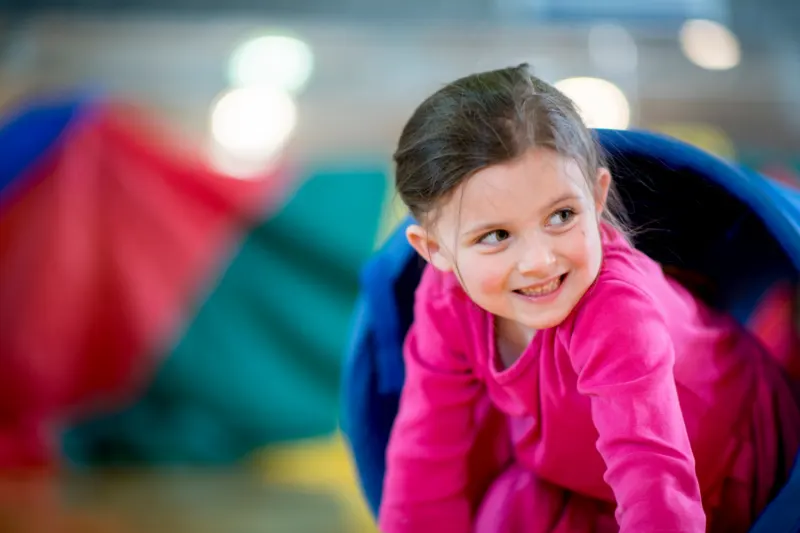
The Importance of Gross Motor Skills Development in Preschoolers
During the preschool years, children experience rapid growth and development in various areas, including their physical abilities. This is a critical period for gross motor skills development, as it sets the foundation for future physical activities and sports.
By engaging in activities that target their large muscle groups, preschoolers can improve their strength, balance, coordination, and overall physical fitness. Gross motor skills development also has a positive impact on other areas of a child's life.
When children feel confident in their physical abilities, they are more likely to participate in physical activities, sports, and games. This not only promotes a healthy lifestyle but also enhances their social skills, as they learn to cooperate, compete, and interact with their peers.
Additionally, gross motor skills activities provide valuable opportunities for children to practice following instructions, taking turns, and problem-solving, further supporting their overall development.
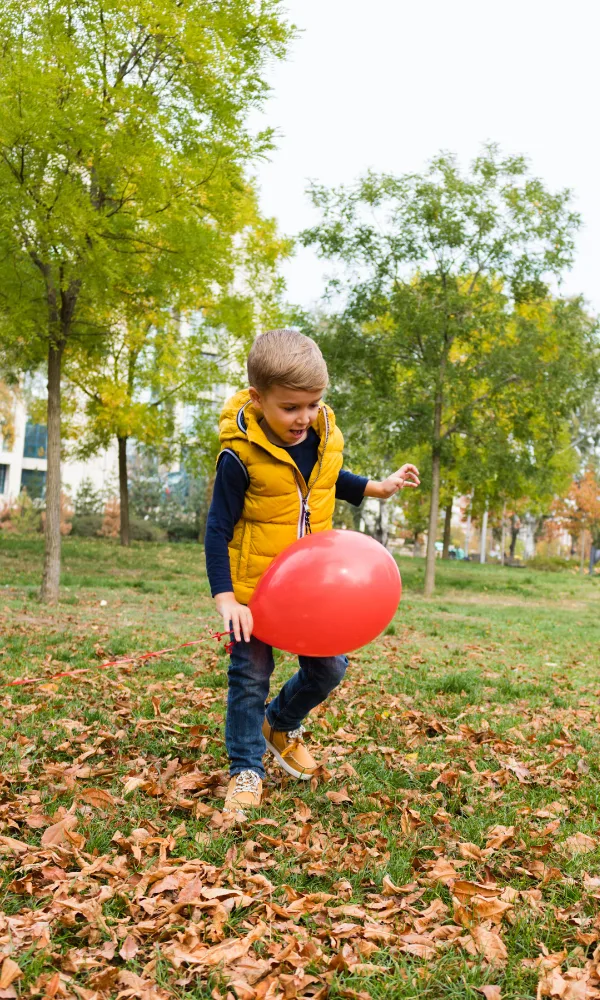
Benefits of Incorporating Fun Activities for Gross Motor Skills
Now that we understand the importance of gross motor skills development in preschoolers, let's explore the benefits of incorporating fun and engaging activities into their daily routine. By making gross motor skills activities enjoyable, children are more likely to participate willingly and stay motivated.
Key Benefits of Incorporating Gross Motor Activities into your Preschooler's Routine
#1 – Physical Fitness
Gross motor skills activities help improve cardiovascular fitness, muscle strength, and endurance, promoting overall physical health and well-being.
#2 – Coordination and Balance
These activities require children to coordinate their movements, improving their balance, spatial awareness, and hand-eye coordination.
#3 – Social Interaction
Participating in gross motor skills activities with other children fosters social interaction, cooperation, and teamwork.
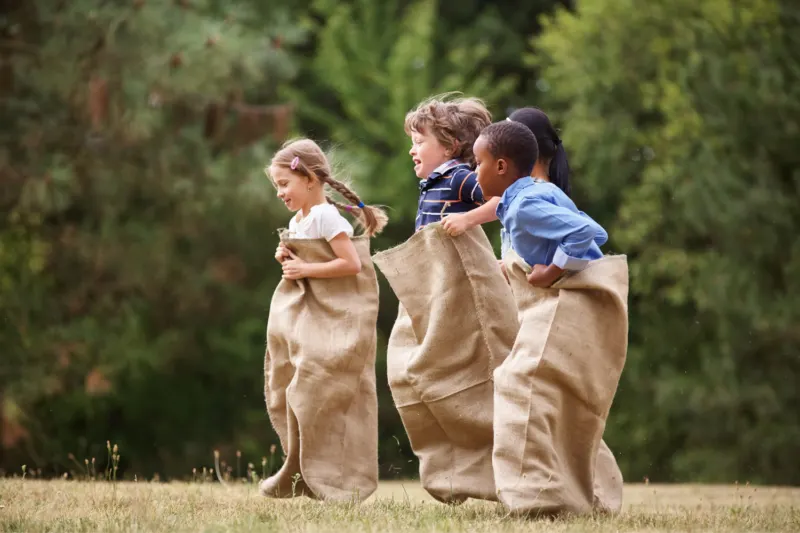
#4 – Confidence and Self-Esteem
As children master new skills and overcome physical challenges, their confidence and self-esteem grow, setting the stage for future success.
#5 – Cognitive Development
Gross motor skills activities involve problem-solving, decision-making, and memory recall, supporting cognitive development and brain function.
Now that we understand the importance and benefits of gross motor skills development, let's dive into fun and effective activities that will help boost your preschooler's physical development!
Gross Motor Skills Preschool Activities
Activity 1: Obstacle Course
An obstacle course is a versatile and exciting way to engage preschoolers in a variety of gross motor skills activities. You can set up the course both indoors and outdoors, using everyday objects and props to create challenges.
Start by designing a course that incorporates crawling, jumping, balancing, and running. For example, you can use pillows for jumping, a balance beam made out of tape, and tunnels made from cardboard boxes. Encourage your child to complete the course as quickly as possible, or turn it into a friendly competition by timing them or racing against a sibling or friend.
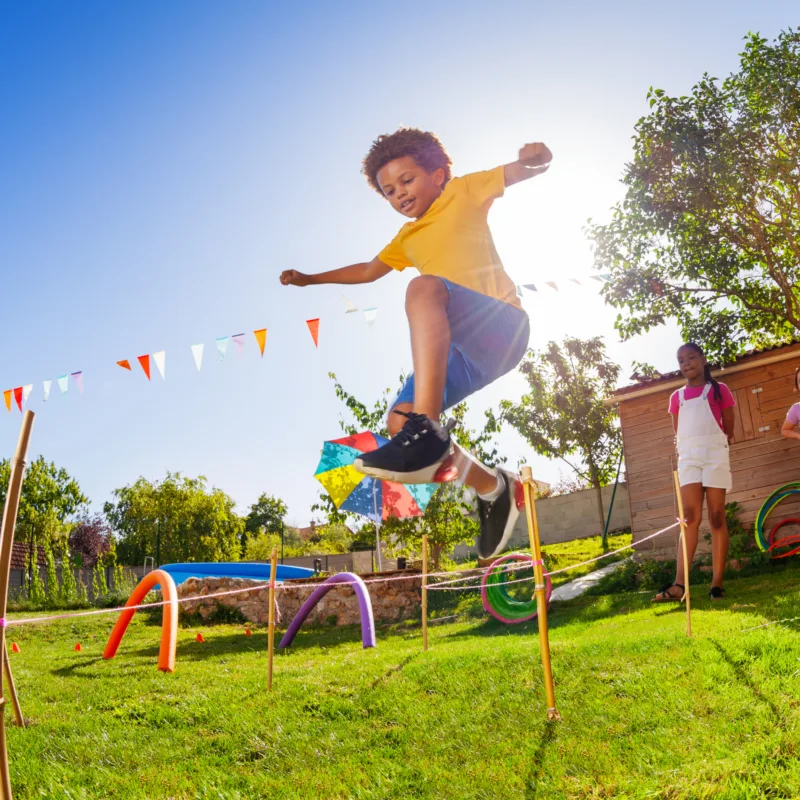
The obstacle course not only helps develop gross motor skills but also enhances problem-solving, decision-making, and spatial awareness. It also provides a platform for creativity, as children can design their own courses and come up with new challenges.
Remember to make the obstacle course age-appropriate and safe, removing any potential hazards and providing supervision when necessary. Obstacle courses are a fantastic way to keep your preschooler active, entertained, and engaged in physical play.
Activity 2: Balloon Volleyball
Balloon volleyball is a low-impact and fun activity that can be played indoors or outdoors. All you need is a balloon and a designated area for the game. Set up a “net” using a string or a piece of tape, and divide the players into two teams.
The objective of the game is to keep the balloon from touching the ground and to score points by hitting it over the “net” without it being returned. This game helps develop hand-eye coordination, spatial awareness, and teamwork.
To make the game more challenging, you can increase the distance between the teams or introduce rules such as allowing only one touch per player or limiting the number of hits before the balloon must be returned. Balloon volleyball is a great way to improve gross motor skills while having fun and promoting friendly competition.
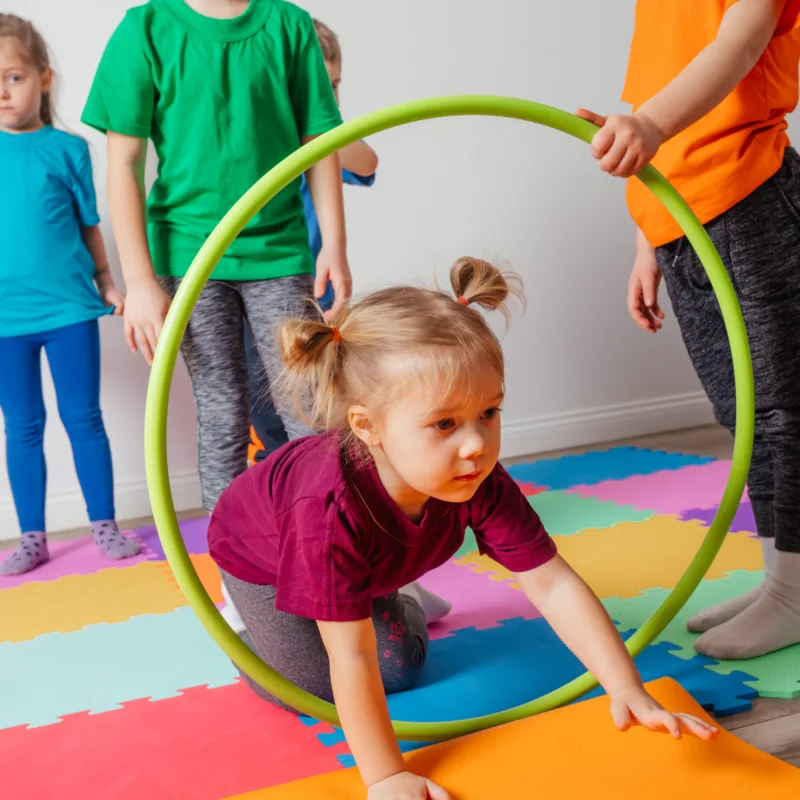
Activity 3: Animal Movements
Animal movements are a playful and imaginative way to engage preschoolers in gross motor skills activities. Encourage your child to imitate the movements of various animals, such as crawling like a bear, hopping like a kangaroo, or slithering like a snake.
You can also create a “zoo” by placing pictures or stuffed animals representing different animals around the room, and have your child move from one animal to another, imitating their movements.
Animal movements help develop coordination, balance, and body awareness. They also encourage creativity and imagination, as children explore different ways of moving and expressing themselves.
This activity can be done indoors or outdoors, and you can even add music or sound effects to make it more engaging. Get ready to unleash the animal within and have a roaring good time!
Activity 4: Simon Says
Simon says is a classic game that promotes listening skills, following instructions, and coordination. It can be easily adapted to incorporate gross motor skills activities. Start by designating one person as “Simon” who will give instructions to the other players.
The players must only perform the actions when the instruction begins with “Simon says.” For example, “Simon says touch your toes” or “Simon says hop on one leg.” To incorporate gross motor skills activities, you can include instructions such as “Simon says jump five times” or “Simon says do five jumping jacks.”
This game not only improves listening skills and coordination but also provides opportunities to practice counting and number recognition. Get ready to listen carefully and follow Simon's lead!
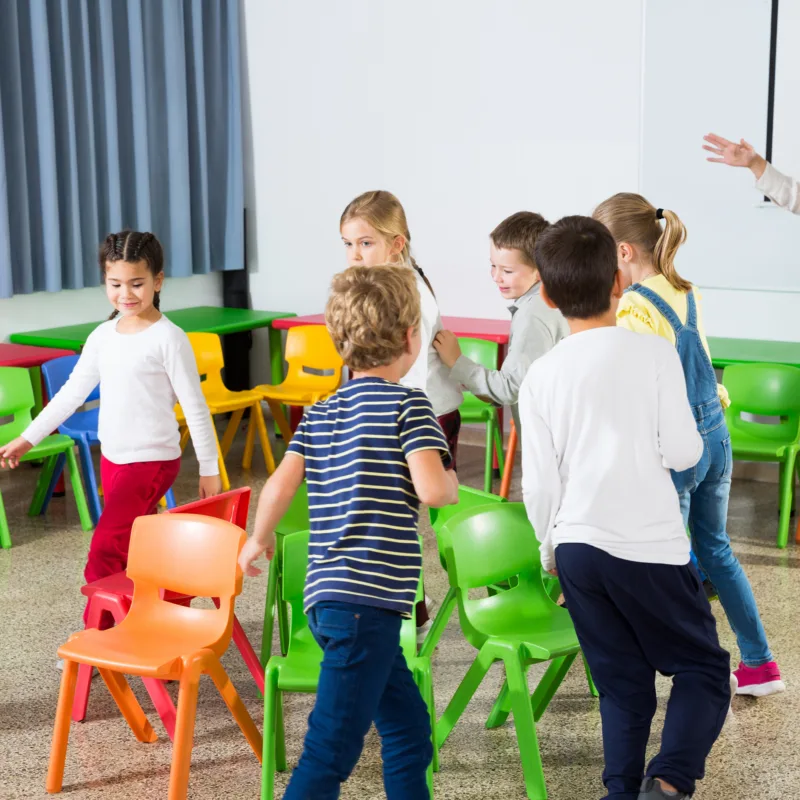
Activity 5: Musical Chairs
Musical chairs is a beloved party game that can be adapted to target gross motor skills development. To play, arrange chairs in a circle, placing one less chair than the number of players. Play music while the players walk or dance around the chairs. When the music stops, the players must quickly find a chair to sit on. The player left without a chair is “out,” and one chair is removed for the next round.
To adapt this game for gross motor skills development, you can add movement challenges during the music-playing phase. For example, instruct the players to skip, hop, or march around the chairs. This variation not only improves coordination and balance but also adds an extra level of physical activity to the game. Let the music play and get ready to take a seat in this exciting and active twist on musical chairs!
Activity 6: Hula Hoop Fun
Hula hooping is a classic activity that engages the entire body and improves core strength, coordination, and balance. Start by providing each child with a hula hoop and instruct them to place it around their waist.
Encourage them to move their hips in a circular motion to keep the hula hoop spinning. Once they master the basic movement, introduce challenges such as walking or dancing while hooping or trying to hoop around other objects.
Hula hoop fun can be done individually or as a group activity, and it can be done both indoors and outdoors. This activity not only improves gross motor skills but also provides a cardiovascular workout and enhances rhythm and body awareness. Get those hips moving and have a blast with hula hoop fun!
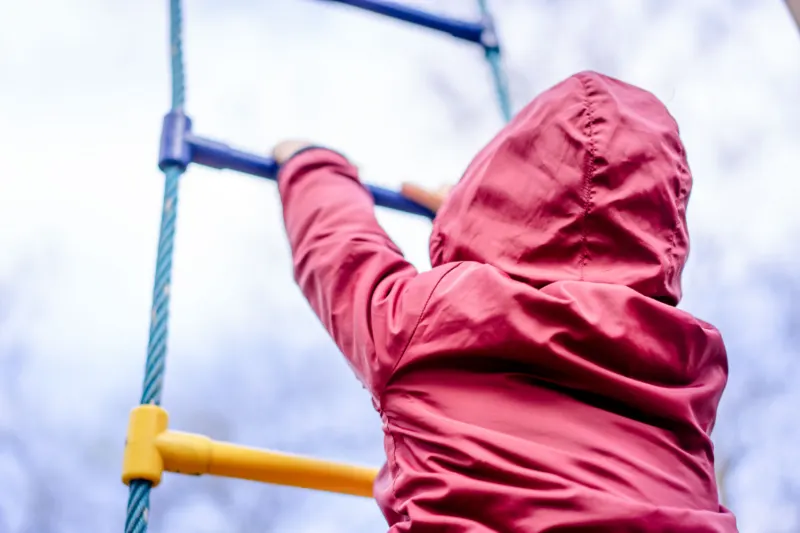
Activity 7: Climbing
Climbing is an excellent gross motor skills activity for preschoolers because it promotes physical development in multiple ways. It helps children build strength and coordination as they use their arms and legs to navigate obstacles, enhancing their overall motor skills.
Additionally, climbing encourages spatial awareness and problem-solving as youngsters plan their ascent and make decisions about where to place their hands and feet, fostering cognitive development.
Moreover, it fosters self-confidence and a sense of accomplishment as children overcome physical challenges, contributing to their emotional and social growth while providing a fun and engaging way to exercise and explore their environment.
Examples of climbing activities and toys for preschoolers include:
- Climbing Walls: Indoor climbing walls designed specifically for young children are safe and enjoyable. They typically feature large, colorful holds and easy-to-reach hand and foot placements.
- Jungle Gyms: Playgrounds with climbing structures like jungle gyms or playsets provide opportunities for kids to climb, crawl, and explore safely. Make sure the equipment is designed for preschool-age children and has soft landing surfaces.
- Tree Climbing: Under adult supervision, climbing low branches on sturdy trees can be an exciting and adventurous outdoor activity. Ensure the tree is safe and free from sharp objects or hazards.
- Bouldering: Bouldering is a type of rock climbing that doesn't require ropes or harnesses. Many climbing gyms offer bouldering areas suitable for children. They typically have soft mats and easy, kid-friendly routes.
- Climbing Nets: Some playgrounds have climbing nets that are suitable for preschoolers. These nets are generally made from durable materials and provide a fun and safe climbing experience.
- Indoor Climbing Gyms: Some indoor climbing gyms offer specially designed areas or routes for kids. These facilities provide a controlled environment with trained staff to ensure safety.
- Pillow Piles: Create a “pillow pile” by stacking soft cushions and pillows. Children can climb up and jump off onto the pile, helping develop balance and coordination while having fun.
- Rocking Climbing Toys: There are climbing toys designed for young children, such as rockers or climbing cubes. These are usually made of soft, safe materials and can be used indoors.
- Tunnels and Tents: Play tunnels and pop-up tents often have climbing components built into their design. These can be used both indoors and outdoors and provide a fun way for kids to explore and climb.
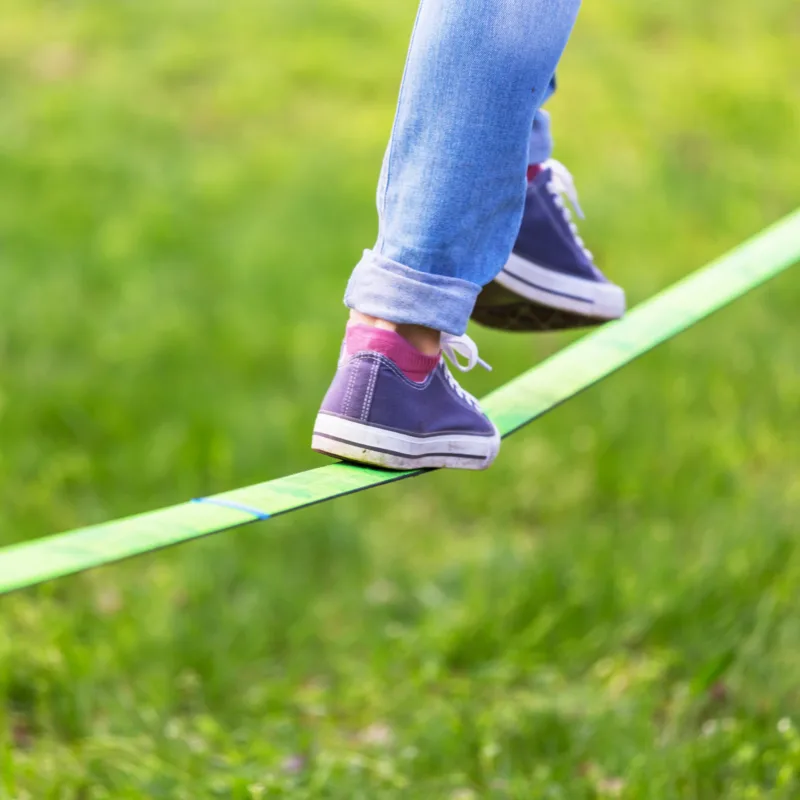
Activity 8: Slack Line
A slackline is an excellent gross motor skills activity for preschoolers because it promotes balance, coordination, and core strength while providing an engaging and fun physical challenge. As children walk or crawl along the wobbly line suspended close to the ground, they must constantly adjust their body movements, enhancing their proprioceptive awareness and spatial perception.
This activity not only helps them develop fundamental motor skills but also boosts their self-confidence as they conquer physical obstacles, fostering a sense of accomplishment and physical competence in young children.
Activity 9: Balance Board
A balance board is an excellent gross motor skills activity for preschoolers because it engages multiple muscle groups and helps develop core strength, balance, coordination, and spatial awareness in a fun and interactive way.
By standing or rocking on the board, children learn to control their movements, enhancing their proprioceptive and vestibular senses while also building confidence in their physical abilities.
This activity not only supports their physical development but also fosters concentration, problem-solving, and perseverance as they strive to maintain their balance, making it a holistic and beneficial exercise for young children.
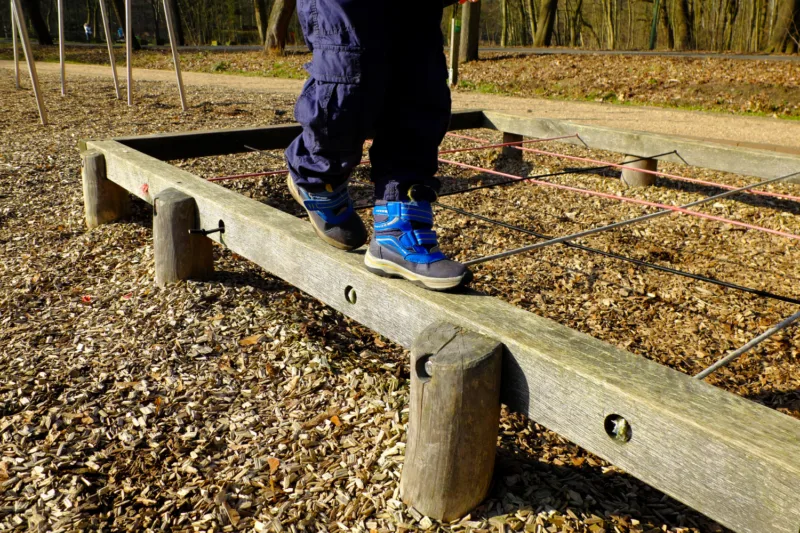
Activity 10: Balance Beam
A balance beam is a valuable gross motor skills activity for preschoolers because it promotes physical coordination, balance, and spatial awareness while engaging major muscle groups. This activity helps young children develop their core strength and fine-tune their sense of equilibrium, which are crucial foundations for overall motor development.
Additionally, walking on a balance beam encourages concentration and focus, enhancing cognitive skills, and fosters confidence as children gradually master the skill, making it a well-rounded and beneficial exercise for their physical and cognitive growth.
Loads of natural balance beams exist including rock wall pathways, fallen logs, and tree stumps.
When organizing climbing activities for preschoolers, it's crucial to prioritize safety by ensuring proper supervision, using age-appropriate equipment, and providing soft landing surfaces, such as mats or grass. Always monitor children closely to prevent accidents and injuries. Additionally, encourage and support their efforts, but let them set their pace and comfort level when climbing.
Gross motor skills development is crucial for preschoolers, as it sets the foundation for physical health, coordination, and overall well-being. By incorporating fun and engaging activities into their daily routine, you can help boost their physical development while keeping them active, entertained, and motivated.
From obstacle courses and balloon volleyball to animal movements and hula hoop fun, these activities provide valuable opportunities for children to improve their coordination, balance, and strength, all while having a great time. So, get ready to jump, hop, and run with your preschooler and watch them thrive in their physical abilities. Happy playing!
